Tu Le Or Mu Cang Chai? Where Is The Best Choice For Your Trip To Yen Bai?

Table of Contents
I. Overview of Tu Le and Mu Cang Chai

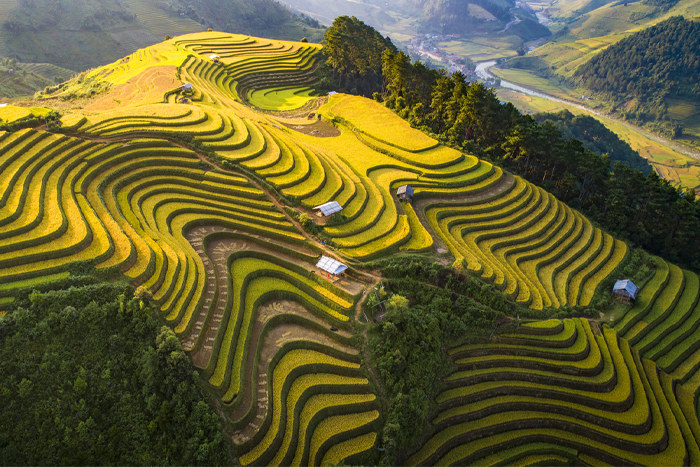
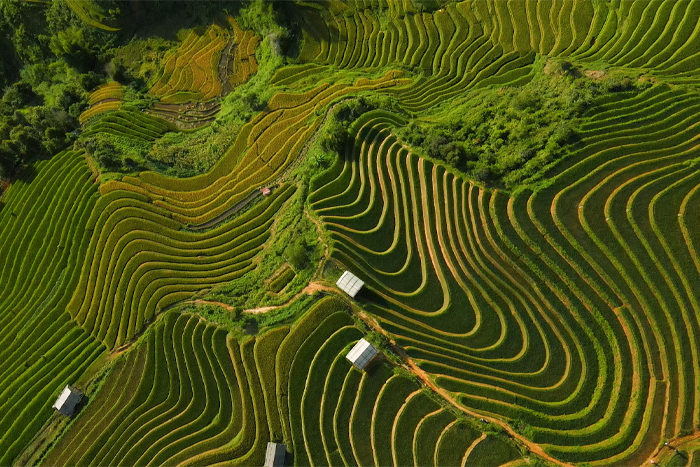
II. Tu Le: The hidden gem
1. Location and key features
Tu Le valley, a small commune in Van Chan district, is one of Yen Bai province's hidden treasures. Located approximately 137 kilometers west of Yen Bai city center, this picturesque valley offers visitors a glimpse into the authentic rural life of northern Vietnam. Nestled in the heart of Van Chan district, Tu Le valley is surrounded by majestic mountains and breathtaking landscapes that transform with the seasons, from vibrant green rice paddies in summer to golden terraced fields during harvest time.
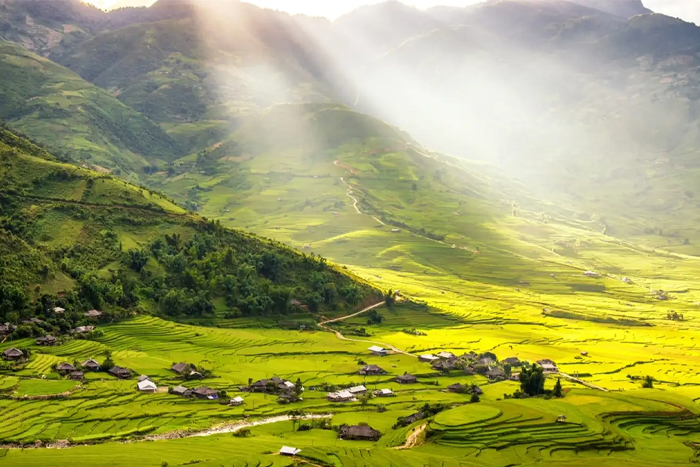
Despite its relatively small size, Tu Le has gained recognition among travelers seeking off-the-beaten-path experiences. Its location, while remote, makes it an ideal stop for those journeying between Yen Bai and the more famous rice terraces in Mu Cang Chai. The journey to Tu Le itself is part of the adventure, with winding mountain roads offering spectacular views of the surrounding countryside.
2. Landscape and attractions
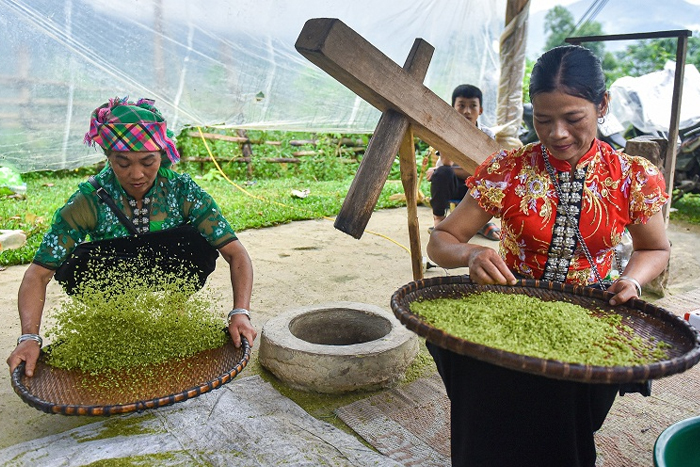
One of Tu Le's most famous attractions is its eponymous sticky rice, renowned throughout Vietnam for its exceptional flavor and quality. The unique climate and soil conditions of the valley contribute to the rice's distinctive taste, making it a must-try for any culinary enthusiast visiting the area.

For nature lovers, Tu Le Yen Bai offers numerous trekking opportunities through its terraced fields and surrounding mountains. The less-traveled paths here provide a sense of discovery and adventure, allowing visitors to explore pristine landscapes away from the crowds. The nearby Tu Le hot springs offer a relaxing retreat after a day of exploration, where you can soak in mineral-rich waters while enjoying the serene mountain views. Photography enthusiasts will find Tu Le valley a paradise for capturing the interplay of light and landscape. The morning mist rolling over the terraced fields, the vibrant traditional attire of the local people, and the rustic charm of village life all provide excellent subjects for both amateur and professional photographers.
3. Unique points of Tu Le valley
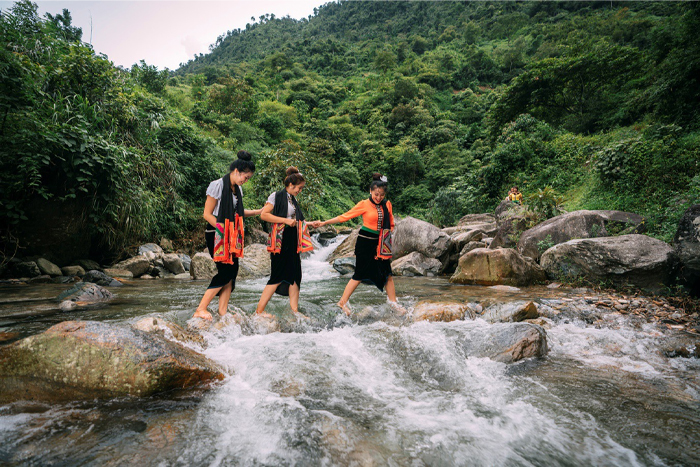
Unlike many other mountainous areas in Yen Bai, Tu Le boasts natural hot springs. These mineral-rich waters offer a relaxing retreat for visitors, especially after a day of trekking. The hot springs provide a unique combination of natural therapy and scenic mountain views.
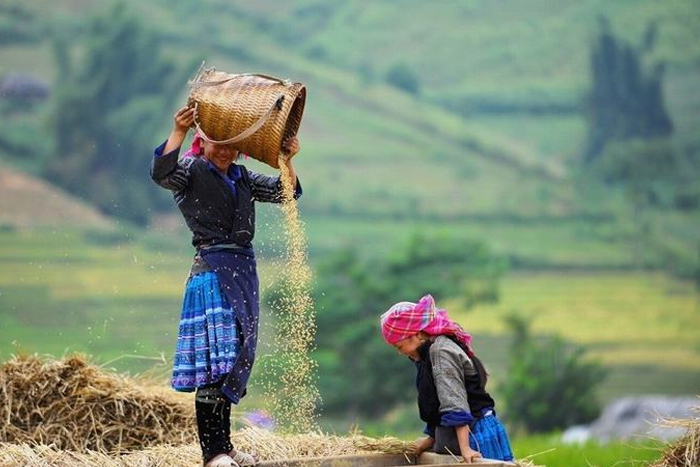
When it comes to ethnic diversity, while many areas in Yen Bai Vietnam are predominantly H'mong, Tu Le is home to a mix of ethnic groups, including Thai and H'mong communities. This diversity offers visitors a chance to experience a variety of cultural traditions and customs in one location.
Compared to more famous destinations like Mu Cang Chai, Tu Le valley remains relatively undiscovered. This offers visitors a more authentic and intimate experience of rural Vietnamese life, without the crowds often found in more popular locations.
III. Mu Cang Chai: The terraced rice field paradise
1. Geographic location and characteristics
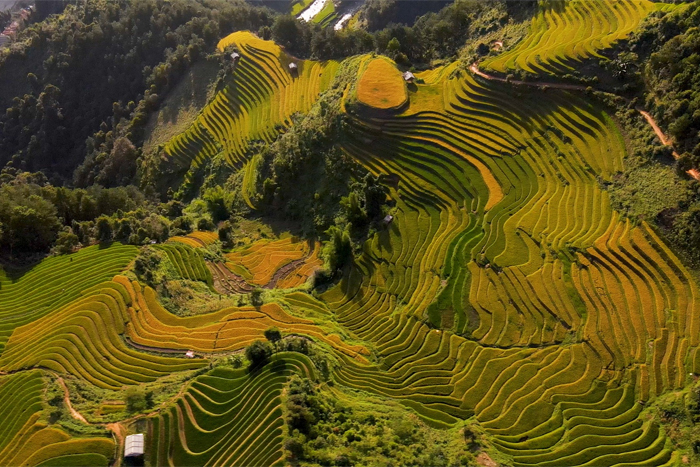
Unlike Tu Le Yen Bai, which is a small commune, Mu Cang Chai is a larger, more expansive district in the northwestern part of Yen Bai province, Vietnam. This mountainous region is situated at the foot of the Hoang Lien Son mountain range, at an impressive altitude of 1,000 meters above sea level. The journey to Mu Cang Chai itself is part of the adventure, as visitors must traverse the famous Khau Pha Pass - one of the "Four Great Passes" of the Northwest region. The district's unique geographical location, nestled high in the mountains and accessed through a legendary mountain pass, adds to its allure. The challenging journey to reach Mu Cang Chai Yen Bai is rewarded with spectacular views and a sense of having arrived at a truly special destination, far removed from the hustle and bustle of urban life.
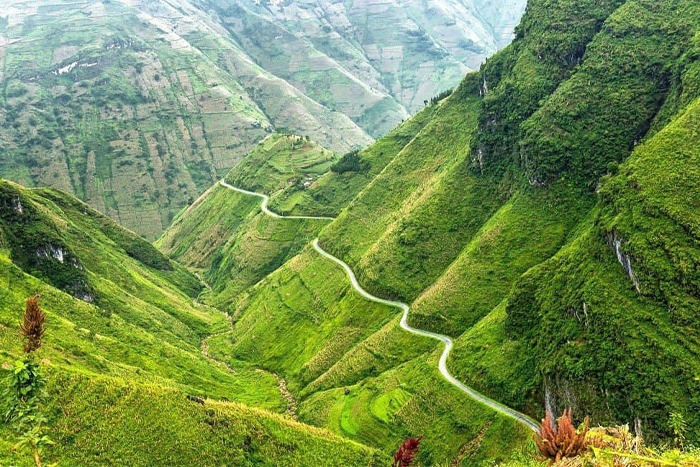
Mu Cang Chai Yen Bai is renowned for its spectacular terraced rice fields, which are considered some of the most beautiful in Vietnam. In 2007, approximately 2,200 hectares of rice terraces in Mu Cang Chai, including those in the communes of La Pan Tan, Che Cu Nha, and De Xu Phinh, were recognized as a National Landscape Heritage site by the Vietnamese Ministry of Culture, Sports and Tourism. These terraces, sculpted into the mountainsides over centuries by the Hmong people, are not only a testament to human ingenuity but also a breathtaking example of the harmony between agriculture and nature.

Spanning approximately 1,199 square kilometers, Mu Cang Chai Yen Bai is divided into 14 communes and one town. Despite the extensive terracing, forests still cover much of the higher elevations, contributing to the district's diverse ecosystem. This unique combination of natural beauty, cultural landscapes, and challenging terrain has made Mu Cang Chai a captivating destination for travelers seeking to experience the raw beauty of Vietnam's northern highlands.
2. Famous landscapes and standout features
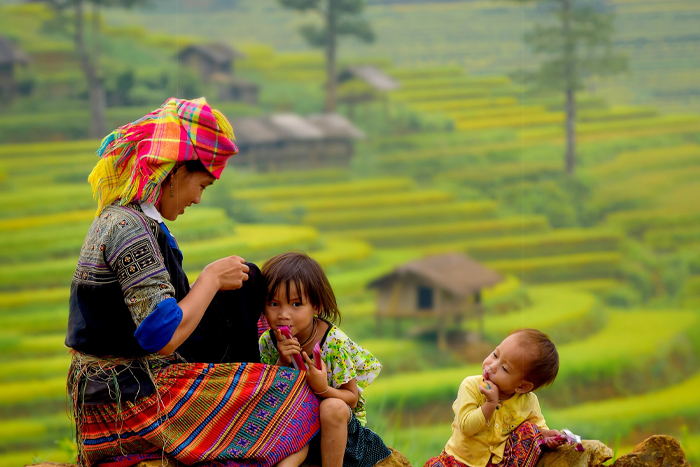
Unlike Tu Le valley, Mu Cang Chai boasts a greater number of villages, each surrounded by more extensive and famously beautiful terraced rice fields. This distinction sets Mu Cang Chai apart as a premier destination for those seeking to experience the full grandeur of Vietnam's highland agricultural landscapes. The district, renowned for its breathtaking scenery, offers visitors a vast tapestry of natural wonders and cultural experiences spread across its numerous communes.
Mu Cang Chai's fame rests primarily on its spectacular terraced rice fields, which have earned it recognition as a National Landscape Heritage site. Rice terraces in mu cang chai, sculpted into the mountainsides by the skilled hands of the Hmong people over centuries, create a mesmerizing vista that changes with the seasons. The sheer scale and variety of these terraced fields, spanning multiple villages and communes, provide a more diverse and extensive experience compared to Tu Le.
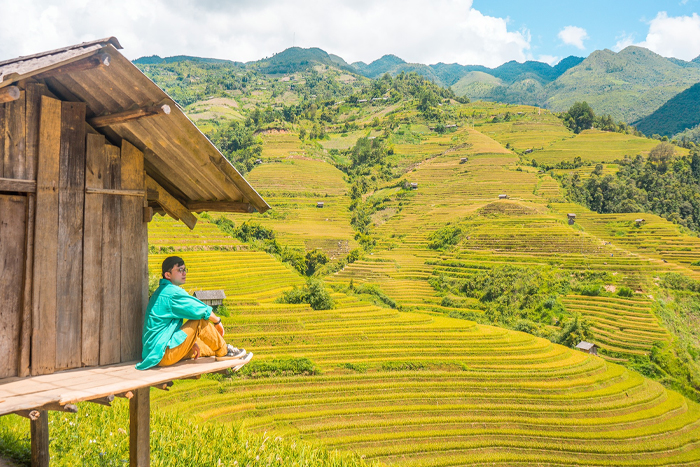
Among the most iconic locations is La Pan Tan commune, home to the famous "fingerprints of heaven." Here, the terraced rice fields form intricate spiral patterns that resemble a golden offering plate during the harvest season. La Pan Tan not only captivates with its agricultural artistry but also charms visitors with its picturesque villages nestled on hillsides, where Hmong girls in vibrant traditional dresses add splashes of color to the landscape.
Another must-visit site is the Mam Xoi hill. Located in La Pan Tan, about 8 kilometers from the town center, this hill has become an emblematic image of Mu Cang Chai's golden season. The hill's unique contours, resembling a giant bowl of sticky rice, make it a favorite spot for photographers and tourists alike. Nearby, visitors can explore a buckwheat flower garden and even rent traditional ethnic costumes for a truly immersive photo experience.
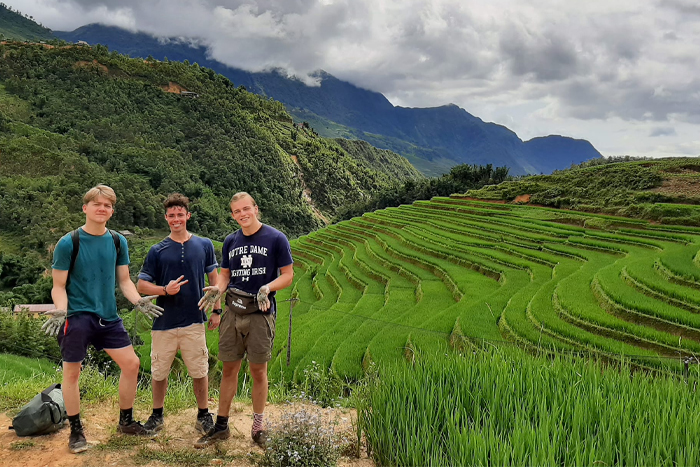
Che Cu Nha, situated about 7 kilometers from Mu Cang Chai's center, offers another perspective on the region's terraced beauty. Known for its bowl-shaped fields, this area provides a unique vista that's characteristic of the local highlands. However, travelers should note that the road to Che Cu Nha can be challenging, especially for first-time visitors.
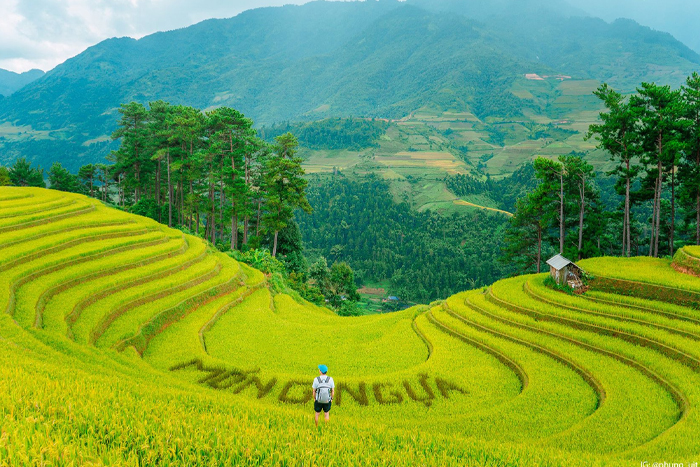
For those seeking a different angle, Mo Ngua hill in Sang Nhu presents crescent-shaped terraced fields that appear like a painting come to life. Located just 2 kilometers from Mu Cang Chai town, this spot is particularly popular among photographers during the harvest season.
Adventure enthusiasts might be drawn to Lim Mong Village in Cao Pha commune, known in trekking circles as one of the "four great dangerous places" in the Northwest. This designation hints at both the challenging terrain and the rewarding experiences that await more intrepid travelers. Nature lovers shouldn't miss the Bamboo Forest in Na Hang Tua Village, offering a serene contrast to the open vistas of the rice terraces. This lush forest provides a cool retreat and a glimpse into the diverse ecosystems of the region.
IV. Practical tips for visitors
1. Getting to Tu Le and Mu Cang Chai
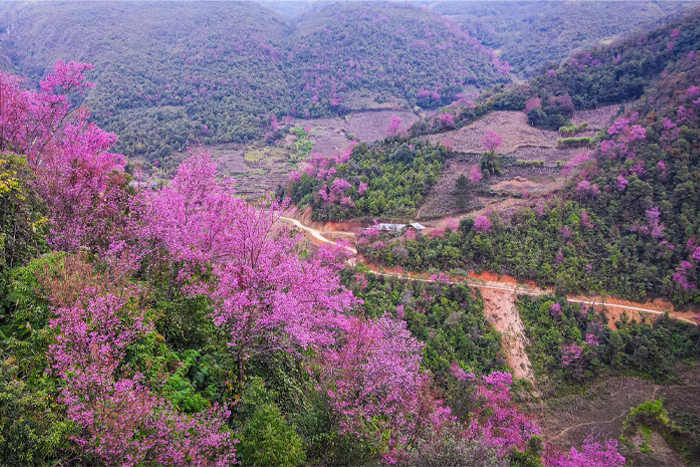
To reach Tu Le and Mu Cang Chai from Hanoi, you have several travel options. By car, the journey to Tu Le is around 250 km, taking about 5-6 hours, while the drive to Mu Cang Chai is approximately 300 km and takes 7-8 hours. Buses from Hanoi's My Dinh or Giap Bat stations can take you to either destination, with travel times of 6-7 hours to Tu Le and 8-9 hours to Mu Cang Chai. Alternatively, you can take a train from Hanoi to Yen Bai city, then continue by bus or taxi for 2-3 hours to Tu Le or 4-5 hours to Mu Cang Chai. Another convenient option is to book an organized trip through a Vietnamese travel agency, which can handle all logistics and provide guided tours. The best times to visit are during the harvest season (September - October) or the water pouring season (May - June). Ensure your vehicle is prepared for mountainous roads and book accommodations in advance.
2. Accommodation options
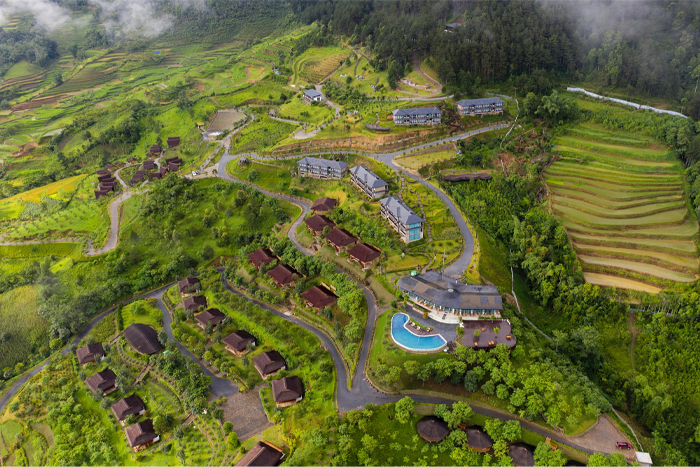
When planning your visit to Tu Le and Mu Cang Chai in Yen Bai, you'll find a range of accommodation options suited to various preferences and budgets. Homestays provide an immersive cultural experience, allowing you to stay with local families from ethnic minority groups like the Thai and Hmong. Guesthouses offer comfortable and affordable lodging with basic amenities, ideal for budget-conscious travelers. For those seeking more convenience and amenities, hotels and resorts in both Tu Le and Mu Cang Chai provide modern facilities and sometimes even spa services, ensuring a relaxing stay amidst the scenic landscapes. It's recommended to book accommodations in advance, especially during peak seasons such as the harvest season (September to October) and the water pouring season (May to June). Checking recent traveler reviews and considering the location's proximity to attractions can help you choose the best place to stay while exploring the natural beauty and cultural richness of Yen Bai province.
3. Must-try local experiences
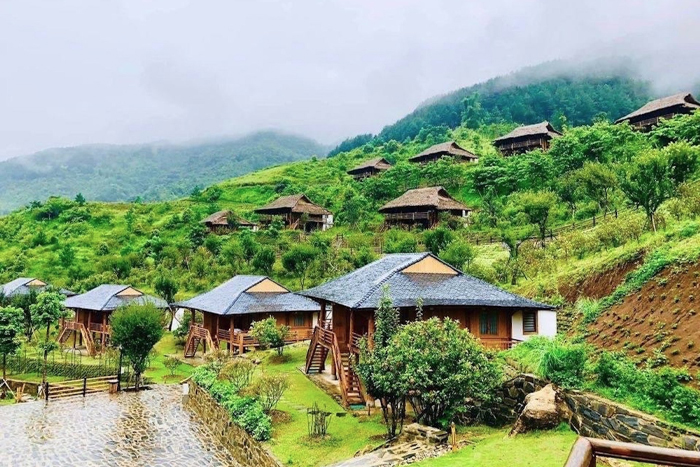
When exploring Tu Le and Mu Cang Chai in Yen Bai Vietnam, there are several distinctive local experiences that should be on your itinerary. In Tu Le, start by marveling at the breathtaking rice terraces, particularly during the harvest season from September to October, when the fields transform into a golden tapestry. These terraces not only showcase the region's natural beauty but also offer excellent opportunities for photography and tranquil walks amidst the serene landscapes. After a day of exploration, unwind in Tu Le's natural hot springs, renowned for their therapeutic benefits. Immerse yourself in the mineral-rich waters while soaking in views of the surrounding mountains, providing a rejuvenating break.
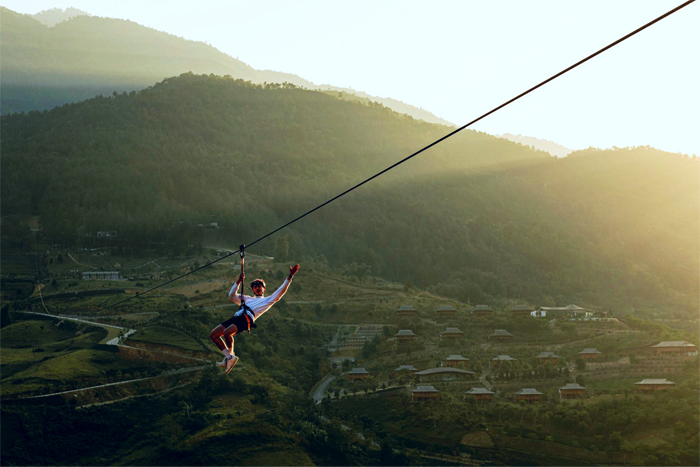
In Mu Cang Chai, the main draw lies in its iconic terraced fields, designated as a national heritage site. Here, trekking through the terraces offers an immersive experience into the local Hmong culture and agricultural practices. Capture the changing scenery and intricate patterns of the fields, which vary with the seasons, making each visit unique. Engage further with the local community by visiting markets and workshops, where you can witness traditional craftsmanship and learn about the vibrant cultural traditions of the Hmong people. If your visit coincides with local festivals like the Khau Pha Paragliding Festival or the Terraced Rice Fields Festival, you can partake in cultural performances and traditional festivities, adding a vibrant cultural dimension to your journey.
> Mu Cang Chai Vietnam
V. Suggested itineraries
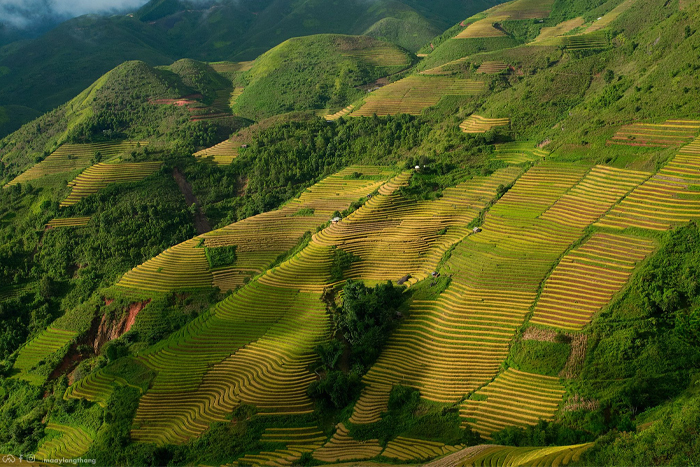
Choosing between Tu Le and Mu Cang Chai for your Yen Bai adventure depends largely on your travel style and what you hope to experience. Tu Le, a smaller commune, offers a more intimate, off-the-beaten-path experience. It's ideal for travelers seeking a quieter, more authentic feel of rural Vietnam, complete with natural hot springs and the famous Tu Le sticky rice. Its proximity to main roads makes it perfect for those short on time. On the other hand, Mu Cang Chai Yen Bai, a larger district, is renowned for its expansive terraced rice fields, recognized as a National Heritage site. It's a paradise for photographers and adventure enthusiasts, offering more diverse landscapes, trekking routes, and iconic views, especially during the harvest season. Mu Cang Chai also boasts more developed tourism infrastructure, making it suitable for longer stays. If your priority is stunning landscapes and photography, Mu Cang Chai is your best bet. For a quieter, more intimate experience, Tu Le valley might be more your speed.

Ideally, if time allows, consider visiting both to get a comprehensive taste of Yen Bai's highland beauty. Start with Tu Le to ease into the region's pace, then move on to Mu Cang Chai for its grand vistas. Whichever you choose, both destinations promise unforgettable experiences in one of Vietnam's most picturesque regions, each offering its own unique window into the culture and natural beauty of northern Vietnam.
In conclusion, both Tu Le and Mu Cang Chai offer unforgettable experiences in Yen Bai Vietnam. Tu Le shines with its serene beauty and less touristy atmosphere, perfect for those seeking a quieter, more intimate encounter with nature and local culture. Mu Cang Chai, with its world-famous terraced fields and more developed tourism scene, is ideal for those wanting iconic views and a wider range of activities. Ultimately, the best choice depends on your personal interests, time constraints, and desired level of adventure. Whichever you choose, you're guaranteed a remarkable journey through one of Vietnam's most beautiful regions.
> What to do in Mu Cang Chai?
> Yen Bai Travel Guide
> North Vietnam Tours
> Mu Cang Chai Tour
Related travel guide
Other similar articles
CUSTOMIZABLE BY LOCAL EXPERTS
Personalized trip at the original price!
REFUND GUARANTEE
We believe in our work and promise to give you money back.
GOOD PRICE / QUALITY
95% satisfied more than expected!
24/7 LOCAL SUPPORT
We are always available online to provide assistance at any time.
Most read articles
Autour Asia is highly recommended on
Embracing the mission of "Satisfied more than expected" and providing authentic experiences, we have received numerous recommendations on reputable travel forums:























